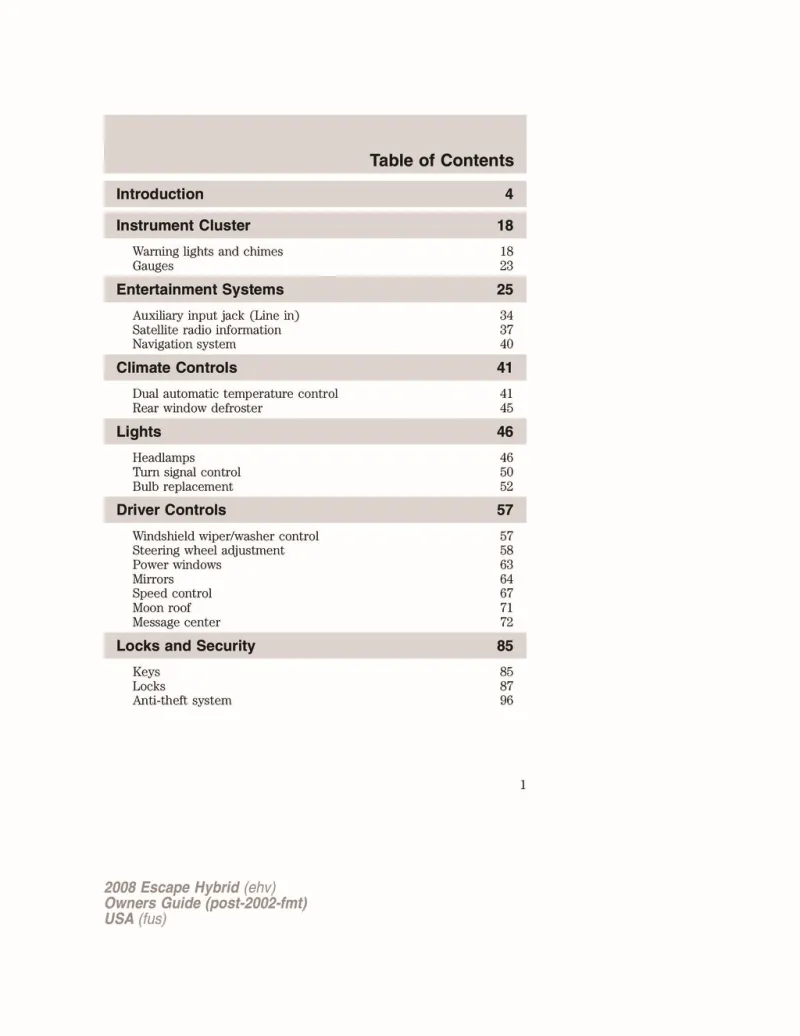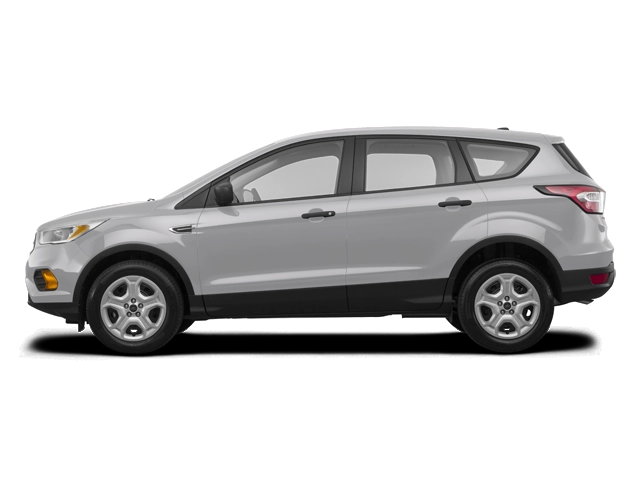2008 Ford Escape Hybrid Owner's Manual

Table of Contents
2008 Ford Escape Hybrid Overview
Introduction
The 2008 Ford Escape Hybrid stands as a pioneering crossover that combines practicality with eco-friendliness. Designed with versatility in mind, this compact SUV offers drivers an opportunity to minimize their carbon footprint without sacrificing performance or comfort. With a stylish exterior and spacious interior, the Ford Escape Hybrid appeals to environmentally conscious drivers and families alike, boasting an array of impressive features and a commendable fuel economy.
Powertrains
The 2008 Ford Escape Hybrid is powered by a sophisticated hybrid powertrain that integrates a 2.5-liter four-cylinder engine with an electric motor, producing a combined output of 177 horsepower. This innovative system allows for seamless transitions between electric and gasoline power, promoting fuel efficiency without compromising driving pleasure. The vehicle features a continuously variable transmission (CVT) that enhances responsiveness and ensures smooth acceleration. Drivers can expect an extraordinary EPA-rated fuel economy of approximately 34 mpg city and 30 mpg highway, making it one of the most economical crossovers of its time.
Trims
Features
Inside the 2008 Ford Escape Hybrid, comfort and convenience reign supreme. The spacious interior can comfortably accommodate five passengers, while ample cargo space makes it practical for family outings or weekend getaways. Standard features include an easy-to-read driver information display, power accessories, and optional navigation systems. Safety is paramount, with features like anti-lock brakes, stability control, and multiple airbags that provide peace of mind on every journey.
Owner's Manual
The Owner's Manual for the 2008 Ford Escape Hybrid is an essential resource for new owners. It provides detailed information on vehicle operation, maintenance schedules, safety guidelines, and troubleshooting tips. Equipped with this manual, owners can optimize their driving experience and ensure that their Escape Hybrid remains in top condition, maximizing its longevity and performance.
User manual download
The Ford Escape Hybrid owner manual for the 2008 model year is to be found in PDF downloadable format on this page. The owner manual for the model year 2008 is free and in English, but the repair manuals are usually not easy to get and may cost more.
Manual Questions
Fill the form below and someone will help you!

